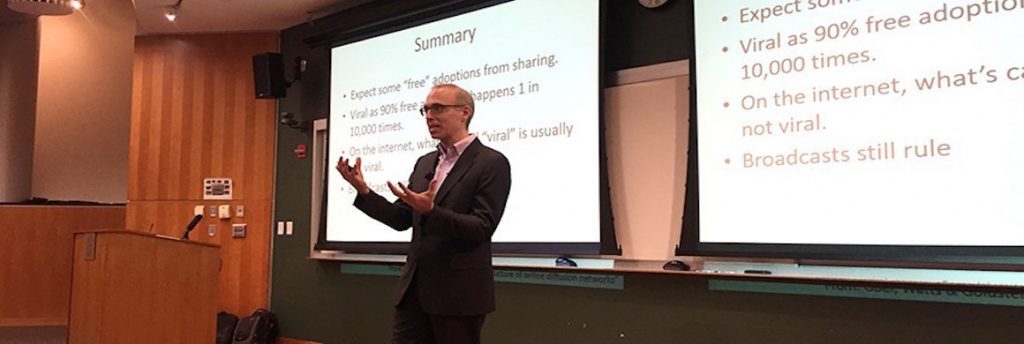Stevens Institute of Technology’s School of Business recently published valuable insight from guest lecturer Dr. Dan Goldstein on the viability of viral marketing in an age where “data and analytics have an outsized impact on how companies market products and services.”
The Lead Microsoft Researcher explained during his discussion, as part of Stevens’ Health Lecture Series, that the Vegas odds of any piece of social media content going viral is roughly 1 in 10,000. According to Dr. Goldstein, “90 percent of social media content is never shared and nearly 10 percent is shared once.”
Dr. Goldstein’s research is concerned with “how customers communicate about brands and products.” He discovered after analyzing a sizable chunk of Facebook and Twitter links between 2010 and 2015 that more than 99 percent of social media information is “obtained directly from the source or by someone one hop away.”
Dr. Goldstein compared sharing on social media to a chandelier with “a celebrity as the pole, the beads are followers who retweet the celebrity and the candles are people retweeting those followers. But there’s only one set of candles, and those retweets are hardly ever shared beyond the first one.”
“The industry is moving more toward quantitative analysis and data mining,” says Assistant marketing professor Gaurav Sabnis. “Because of our unique capabilities in information systems and analytics, we can teach students all that’s happening at the forefront of marketing, giving them an edge when they go out into the job market.”
When asked how modern algorithms influence social media, the guest lecturer also explained that “sponsored content does help content get seen, but that’s not the same as true viral activity, as it’s shown to people who otherwise wouldn’t interact with it.”
Prior to Goldstein’s lecture, Stevens Associate Dean for Research told those in attendance, “He was the person who called me up and said there’s this thing called Mechanical Turk that’s going to change the way we do experiments and think about labor, and he was right. And he was also the person who told me about how network science was changing and was going to affect business, and he was right also. So I’m going to be listening very carefully to what he has to say.”
